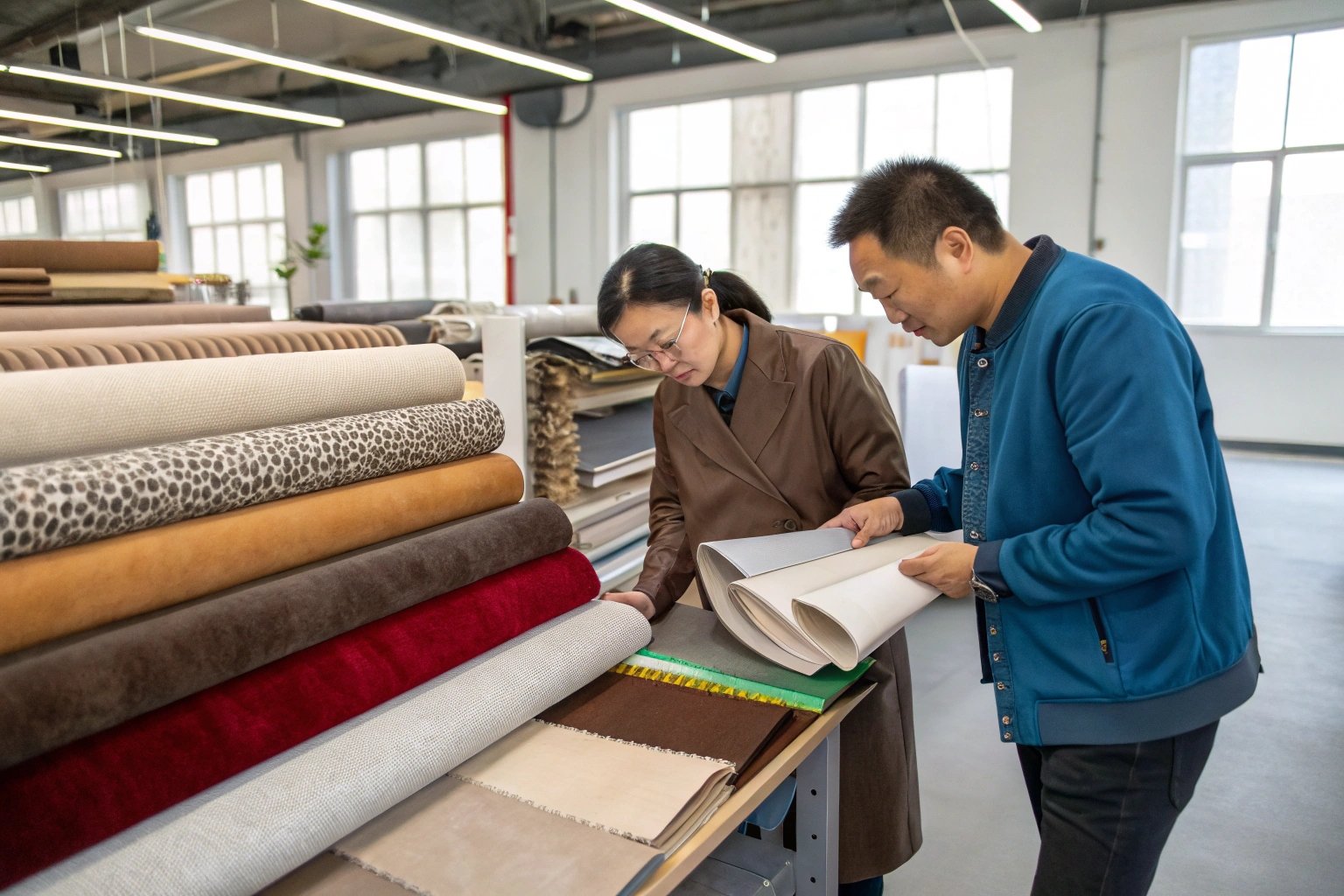In the world of furniture manufacturing, fabric isn’t just an accessory—it defines comfort, aesthetics, durability, and brand identity. The wrong fabric can ruin a premium sofa or make a dining chair feel cheap. For furniture makers, choosing the right upholstery fabric is a high-stakes decision that impacts everything from customer satisfaction to return rates.
The best upholstery fabrics for furniture makers include heavy-duty woven fabrics like linen, velvet, microfiber, and synthetic blends, which offer superior abrasion resistance, texture variety, and long-term performance.
As a fabric manufacturer, I’ve worked closely with both luxury and commercial furniture producers. Whether you’re designing for boutique hotels or high-traffic living rooms, this guide will help you source smarter and build more durable, beautiful furniture.
What Natural Fabrics Are Suitable for Upholstery?
Natural fabrics offer breathability and timeless appeal. But not all plant- or animal-based textiles hold up to daily wear.
Linen, cotton canvas, and wool are popular natural upholstery options due to their breathability, texture, and strength.
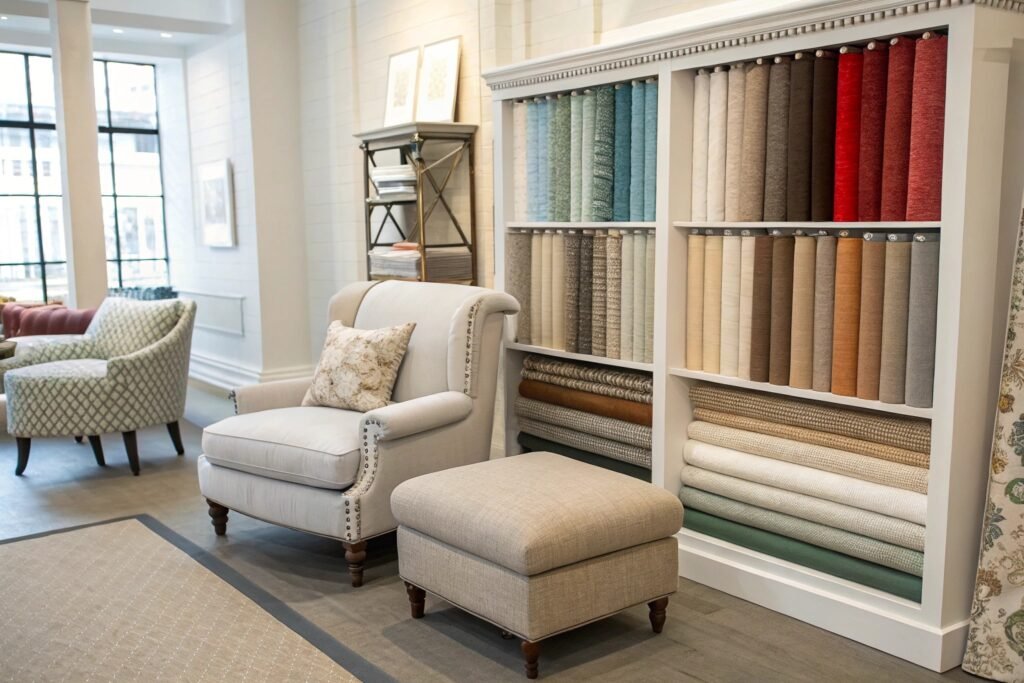
Why Is Linen a Top Choice for Premium Looks?
Linen is known for its crisp texture and elegant drape. It brings a natural, minimalist feel to furniture and suits neutral-toned interiors. While it wrinkles more easily than synthetics, its tensile strength is high. Upholstery-grade linen blends with viscose or polyester help maintain structure.
According to The Linen Works, linen holds up best when backed and tightly woven, and is often used in high-end furniture collections.
Is Wool Durable Enough for Everyday Furniture?
Wool is naturally flame-resistant, soft to the touch, and insulates well. In blends, it can be ideal for colder climates or textured accent chairs. Many commercial-grade wool upholstery fabrics are used in offices and airports due to their high Martindale ratings.
Check Camira Fabrics for examples of upholstery-grade wool with strong abrasion resistance and vibrant dye capacity.
Which Synthetic Fabrics Offer Long-Term Durability?
Synthetic fabrics dominate commercial furniture because they offer consistency, stain resistance, and durability at scale.
Polyester, olefin, and acrylic are widely used in upholstery thanks to their strength, stain resistance, and ease of maintenance.
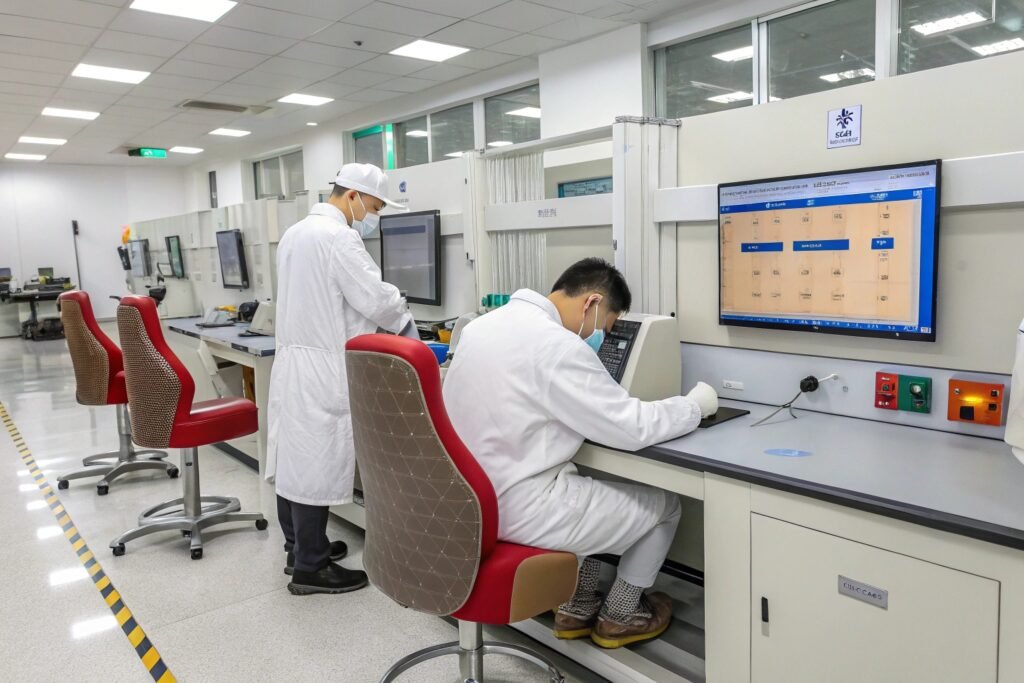
Is Polyester Still the Workhorse of Upholstery?
Yes. Polyester blends well with other fibers and offers strong UV and abrasion resistance. It resists wrinkling and fading, making it ideal for homes with kids or pets. Our clients often request brushed polyester or performance poly-linen blends for sofas and sectionals.
Sites like Revolution Fabrics provide in-depth guides to performance polyester’s benefits in upholstery.
What Makes Olefin Suitable for Outdoor and Indoor Use?
Olefin (polypropylene) is naturally stain- and mildew-resistant. It’s colorfast and hydrophobic, making it ideal for patios, poolside loungers, and high-traffic commercial seating. At Fumao, we supply solution-dyed olefin fabrics in textured weaves for both contract and retail buyers.
According to Sunbrella, olefin performs better than cotton in wet climates and costs less than solution-dyed acrylic.
What Are the Trending Upholstery Fabrics in 2025?
Trends in upholstery shift with consumer tastes, but certain textures and finishes stand out in 2025 for their visual appeal and functionality.
Boucle, velvet, recycled PET fabrics, and knit upholstery textiles are dominating modern furniture collections in 2025.
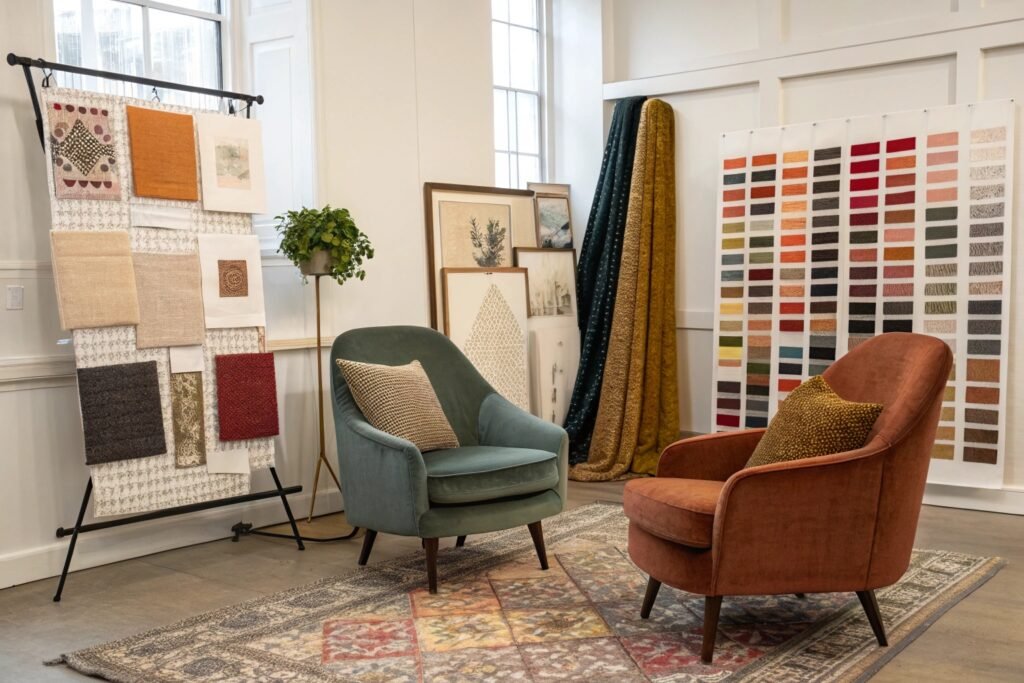
Why Is Boucle Making a Major Comeback?
Boucle offers tactile texture and a cozy aesthetic. Often made from looped yarns, it's perfect for modern, sculptural sofas or mid-century accent chairs. While it may snag easily, we use reinforced yarn blends to improve wear performance.
Brands like Designtex offer boucle fabrics that meet contract durability standards with over 100,000 double rubs.
Are Recycled Fabrics Becoming a Standard?
Yes, sustainability is now a buyer demand. Recycled PET (rPET) upholstery fabrics made from plastic bottles are strong, colorfast, and eco-conscious. We produce GRS-certified recycled polyester fabrics with backing options for high-traffic use.
Resources like Textile Exchange provide global guidance on sourcing recycled upholstery fabrics with traceable supply chains.
What Factors Define a Fabric’s Upholstery Performance?
Fabric appearance matters—but so does performance. Upholstery textiles must withstand years of use, friction, and cleaning.
Performance is measured by abrasion resistance, pilling resistance, lightfastness, and flame retardancy certifications.
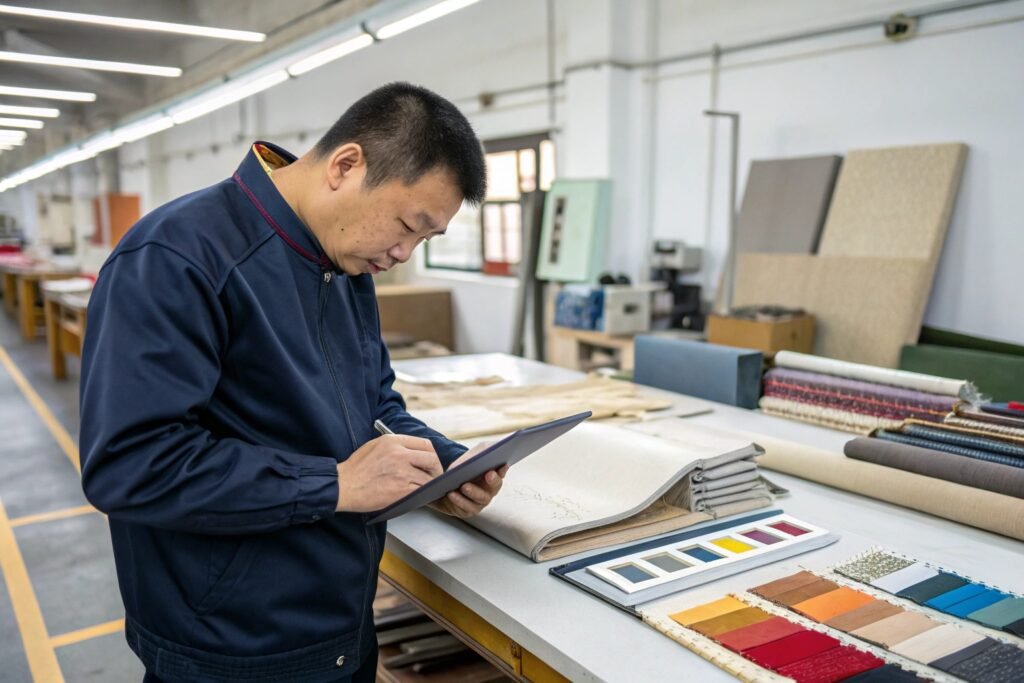
What Abrasion Tests Should You Look For?
The Martindale or Wyzenbeek tests indicate how well a fabric resists wear. For residential use, 15,000–30,000 rubs is standard; for commercial or hospitality, look for 50,000+. Our in-house lab uses Martindale ISO 12947 testing for accurate results.
Fabrics with textured yarns or thick pile, like chenille or velvet, may test differently than flat woven fabrics, so always request data sheets.
Why Is Fire Retardancy Critical in Upholstery?
Furniture makers selling in the U.S., U.K., or hospitality sectors must meet local flammability standards like CAL TB117-2013 or BS 5852. We offer FR-treated fabrics or use inherently FR fibers to meet these standards without topical coatings.
For higher-end buyers, we also provide NFPA 260/UFAC certification support for U.S. markets and source FR interlinings for layered construction.
Conclusion
Upholstery fabric selection isn’t just about texture—it’s about trust, testing, and long-term results. Whether you favor luxurious linen, hardworking polyester, or trending boucle, the key is sourcing from mills that understand both aesthetics and durability. At Fumao, we help furniture makers customize upholstery blends that meet Martindale, FR, and design needs across global markets. When comfort meets compliance, the result is furniture that lasts—and sells.

